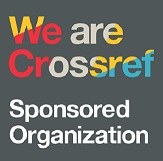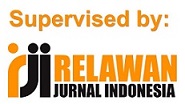STANDARDIZING BEAUTY THROUGH ADVERTISING: A CRITICAL DISCOURSE ANALYSIS OF GARNIER LIGHT COMPLETE SERUM CREAM – CHELSEA ISLAN EDITION
Abstract
Garnier is one of the most famous international beauty products among women in Indonesia. Founded in France, Garnier is specialized in beauty products such as hair care, skincare, and hair color products. Among all the skincare products, Garnier Light Complete Serum Cream is one of the top sales in Indonesia. This paper is intended to analyze beauty product advertisements from Critical Discourse Analysis (CDA) perspective. This study applied qualitative research by using purposive sampling. Garnier’s advertisement does not only convince customers to buy their products but also plant their standard of beauty on women. The advertisement also standardizes the real beauty. The primary data were taken from the advertisement of Garnier Light Complete Serum Cream of Chelsea Islan Edition. This analysis is based on Fairclough’s 3-dimensional model of discourse. Fairclough’s 3-dimensional model discourse focuses on the standardization of real beauty of women through Garnier advertisement. The results show that the advertisements standardize the real beauty of women by using several linguistic devices, semiotics, and strategies. At the end, the Garnier advertisement establishes their ideology of “real beauty” in society.
Keywords
Full Text:
PDFReferences
Allen, R.L., & Liou, D.D. (2018). Managing whiteness: The call for educational leadership to breach the contractual expectations of white supremacy. Urban Education: 004208591878381. https://doi.org/10.1177/0042085918783819.
Arens, W.F., Schaefer, D.H., & Weigold, M.F. (2015). Advertising. New York, USA: McGraw-Hill Education.
Beliso-de-Jesús, A., & Pierre, J. (2020). Anthropology of white supremacy. American Anthropologist, 122(1), 65-75. https://doi.org/10.1111/aman.13351
Chand, P., & Chaudhary, S. (2012). Advertising discourse: Studying creation and perception of meaning. International Journall of English and Lierature, 3(2), 40-49.
Eisend, M., Muldrow, A. F., & Rosengren, S. (2022). Diversity and inclusion in advertising research. International Journal of Advertising, 42(1), 52–59. https://doi.org/10.1080/02650487.2022.2122252
Embrick, D.G., & Moore, W.L. (2020). White space(s) and the reproduction of white supremacy. American Behavioral Scientist, 64(14), 1935-1945. https://doi.org/10.1177/0002764220975053.
Fairclough, N. (1989). Language and power. London, UK: Longman.
Fairclough, N. (1992). Discourse and Social Change. Cambridge, UK: Polity Press.
Fattore, G.L., Amorim, L.D., Marques dos Santos, L., dos Santos, D.N., & Barreto, M.L. (2020). Experiences of discrimination and skin color among women in urban Brazilia latent class analysis. Journal of Black Psychology. 46(2-3), 144-168. https://doi.org/10.1177/0095798420928204.
Hall, R.E. (2020). The DuBoisian talented tenth: Reviewing and assessing Mulatto colorism in the post-DuBoisian Era. Journal of African American Studies, 24(1), 78-95. https://doi.org/10.1007/s12111-019-09457-3.
Henschke, E., & Sedlmeie, P. (2023). What is self-love? Redefinition of a controversial construct. The Humanistic Psychologist, 51(3), 281.
Hidayah, R., & Miilal, A. D. (2016). Ideal identity construction in beauty product advertisement of Garnier. Journal of Lierature, Language, and Language Teaching,7(2), 120-136. https://doi.org/10.15642/NOBEL.2016.7.2.120-136
Iqbal, A., Danish, M. H., & Tahir, M. R. (2014). Exploitation of women in beauty products of “Fair and Lovely”: A critical discourse analysis study. International Journal on Studies in English Language and Literature (IJSELL), 2 (9), 122-131.
Kaur, K., Arumugam, N., & Yunus, N. M. (2013). Beauty product advertisements: A critical discourse analysis. Canadian Center of Science and Education, 9(3), 61–71.
Ladd, B.A., Maheux, A.J., Roberts, S.R., & Choukas-Bradley, S. (2022). Black adolescents’ appearance concerns, depressive symptoms, and self-objectification: exploring the roles of gender and ethnic-racial identity commitment. Body Image, 43, 314-325. https://doi.org/10.1016/j.bodyim.2022.09.008.
Lang, K., & Ariella, K.S. (2020). Race discrimination: An economic perspective. Journal of Economic Perspectives, 34(2). https://doi.org/10.1257/jep.34.2.68
Lotfollahi, B., Ketabi, S., & Barati, H. (2015). English print advertisements for cosmetic and hygienic products and their Persian translations: A critical discourse analysis. Translation and Interpreting Studies, 10(2), 277–297.
Muhammadi, A. H. (2011). Critical analysis of women’s representation in TV advertisements from a cultural studies perspective. International Journal of Women’s Research, 1 (00), 107- 122.
Richards, J. I., & Curran, C. M. (2002). Oracles on “Advertising”: Searching for a definition. Journal of Advertising, 31(2), 63–77. https://doi.org/10.1080/00913367.2002.10673667
Rona, E. (2023). Representation of race and ethnicity in mainstream advertising: A critical analysis of racial stereotypes in global advertising campaigns. Journal of Linguistics and Communication Studies, 2(4), 44-50. https://doi.org/10.56397/JLCS.2023.12.05
Sayogie, F., Husein, A. M., Puspitasari, E. D., & Ni’mah, N. (2023). Racial discrimination in western beauty product advertisements. Media Education (Media Brazovanie),19(2), 329-336. https://doi.org/10.13187/me.2023.2.329
Shankar, S. (2020). Nothing sells like whiteness: Race, ontology, and American advertising. American Anthropologist. 122(1), 112-119. https://doi.org/10.1111/aman.13354.
Sugiharti, D.R. (2018). Beauty construction on Pond’s white beauty Gita Gutawa version: Semiotic analysis of advertisement. Advances in social science, education, and humanities research. Proceeding of International Conference on Language Phenomena in Multimodal Communication (KLUA 2018). Surabaya, Indonesia.
Zouaghi, S., Azar, S. L., Gambier, L. E., & Olfa, B. A. (2017). Prejudice and advertising effectiveness: The polarizer role. Conference of 33ème congrès de l’Association Française du Marketing, Tours, France. Retrieved from https://www.researchgate.net/publication/327895607_Prejudice_and_advertising_effectiveness_the_polarizer_role_of_current_discourse
DOI: https://doi.org/10.30743/ll.v9i1.11104
Refbacks
- There are currently no refbacks.
Fakultas Sastra
Universitas Islam Sumatera Utara (UISU), Medan
Jl. Sisingamangaraja Teladan Medan 20217
Telp. (061) 7869911, e-mail: language_literacy@sastra.uisu.ac.id









